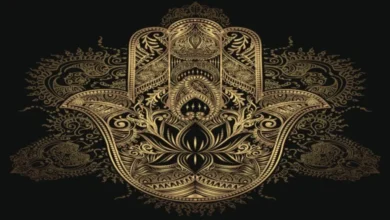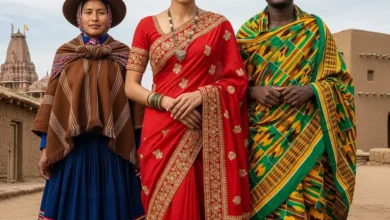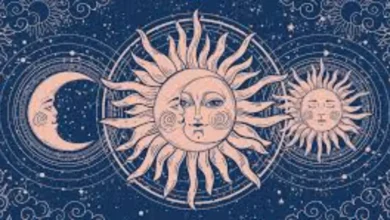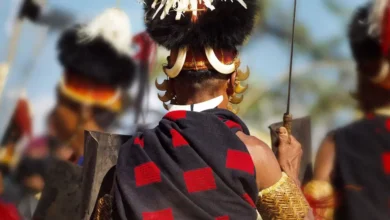Why Lines, Angles, and Shapes Still Speak Louder Than Words
You don’t need flowers to tell a story.
You don’t need animals. Or suns. Or stars.
Sometimes — a zigzag says it all.
A diamond holds an entire universe.
A triangle points to the divine.
A spiral whispers your soul’s journey.
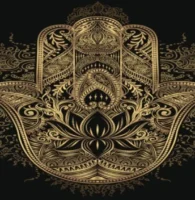 Protective Symbols in Folk Wear: Warding Off Evil with Ancient Designs
Protective Symbols in Folk Wear: Warding Off Evil with Ancient DesignsFor thousands of years — on every continent — people have stitched shapes into cloth.
Not just to look nice.
To say:
I belong here.
I am protected.
I remember.
These are geometric patterns in folk clothing.
See also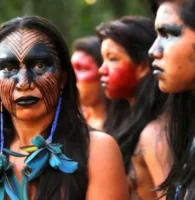 Tribal Identity in Folk Costumes: Ancestral Patterns and Clan Meanings
Tribal Identity in Folk Costumes: Ancestral Patterns and Clan MeaningsAnd they still matter — deeply.
In this article, you’ll learn:
- 📐 What triangles, diamonds, zigzags, and spirals really mean
- 🌍 Real stories from Navajo, Ukrainian, Berber, Kuba, Maori, and more
- ⏳ How these designs survived war, bans, and erasure
- ✂️ How to wear them — or make your own — with respect
- 🧵 A simple DIY guide to create your own pattern (no stealing needed!)
Let’s begin — one shape at a time.
What Are Geometric Patterns? (Plain & Simple)
Geometric patterns = shapes like triangles, diamonds, zigzags, grids, and spirals — sewn, woven, or printed onto folk clothing to carry meaning.
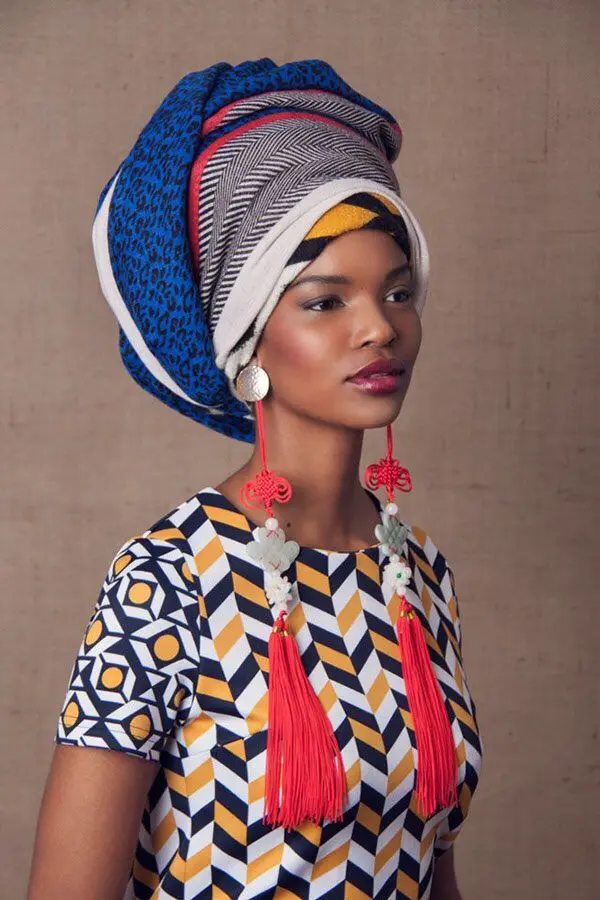
Think:
- Navajo blankets with lightning lines → protection
- Ukrainian shirts with diamond chains → earth + family
- Moroccan capes with eye-diamonds → ancestors watching over you
- Andean ponchos with spirals → life’s never-ending path
These aren’t “just art.”
They’re maps. Prayers. Shields. Family trees in thread.
“We don’t just wear shapes. We wear our history.”
— Diné (Navajo) weaver
Why Did Everyone Use Geometry?
Because shapes work.
They cross languages. Survive time. Fit any cloth.
Here’s why cultures chose them:
1. Everyone Understands a Shape
No dictionary needed.
A triangle? Up = sky. Down = earth. Pointy = power.
A spiral? You’re growing. Changing. Returning.
Simple. Universal. Deep.
2. Math Was Sacred
Many saw math as holy.
Symmetry. Repetition. Balance.
Stitching it into clothes = living in harmony with the universe.
3. Shapes Keep You Safe
Sharp angles? Zigzags? Grids?
Believed to block bad luck. Confuse evil spirits. Shield the heart.
Like spiritual armor — made of thread.
4. Your Pattern Tells Your Story
Which village? Which clan? Which season?
One glance at a hem — and elders knew.
“She’s from the river valley. Her mother taught her well.”
— Slavic grandmother, Ukraine
Quick Guide: What Each Shape Means
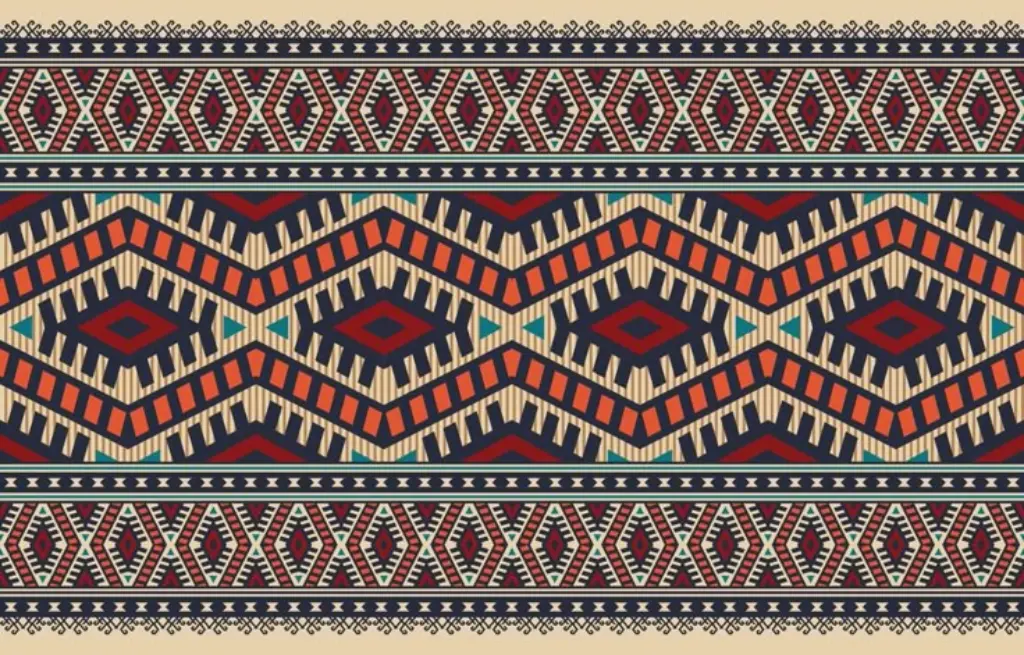
| Shape | Where It’s Used | What It Means |
|---|---|---|
| ▲ Triangle | Navajo, Slavic, Tibetan | Mountain. Fire. Divine power |
| ◆ Diamond | Berber, Ukrainian, Kuba | Earth. Protection. Ancestors’ eyes |
| ⤡ Zigzag | Navajo, Ainu, West Africa | Lightning. Water. Change |
| 🔁 Spiral | Maori, Celtic, Quechua | Growth. Journey. Return |
| ■ Grid | Kuba, Islamic, Baltic | Order. Community. Cosmos |
| ⬢ Hexagon | Global beehives, Islamic art | Unity. Cooperation. Sweetness |
| V Chevron | Balkan, Ghanaian, Siberian | Warrior strength. Direction. Ascent |
Now — let’s meet each shape up close.
▲ Triangle: Pointing to Something Bigger
Triangles point. Always.
Up to sky. Down to earth. Out to spirit.
Navajo — Mountains That Hold You
Navajo weavers stitch stacked triangles into wool blankets.
Each one = a sacred mountain.
Wear it to feel grounded. Protected. Held.
“Mountains don’t move. Neither does our spirit.”
— Lillie Taylor, Navajo weaver
Ukraine — Womb of the Earth
On women’s blouses (vyshyvankas), downward triangles = Mother Earth.
Red thread = life. Black = strength. White = peace.
Stitched near hips — honoring feminine power.
Tibet — Flame + Wisdom
Tibetan aprons (pangden) use red-and-white striped triangles.
Red = fire. Passion. Life.
White = snow. Clarity. Calm.
Together? Perfect balance.
◆ Diamond: The Earth Is Watching
Diamonds are everywhere — and for good reason.
They hold space. They protect. They remember.
Berber (Morocco) — Eyes of Your Ancestors
Amazigh women stitch diamond grids onto wool capes.
Each diamond = an ancestor’s eye.
Watching. Guiding. Loving.
Older women say: “Stitch tight. No harm gets through.”
Colors speak too:
- Red = courage
- Green = hope
- Blue = sky memory
- Yellow = sun’s kiss
Ukraine — Fields, Seeds, Family
Ukrainian diamond chains = plowed fields.
Seeds planted. Harvests shared. Generations linked.
During war, women stitched extra diamonds — praying for peace to return.
“When bombs fall, we stitch more eyes. So the land remembers who loves it.”
— Oksana, Lviv embroiderer
Congo — Royal Code
Kuba people weave raffia cloth with diamond mosaics.
Patterns have names:
“Leopard’s Tears.”
“Chief’s Path.”
“Rain’s Footprint.”
Only royalty wore the most complex ones.
Today, artists sell globally — but profits stay local.
“A diamond isn’t just a shape. It’s a promise to the earth.”
— Kuba elder
⤡ Zigzag: Dance With Change
Zigzags don’t sit still.
They move. Flow. Shift.
Perfect for life’s twists.
Navajo — Lightning That Cleanses
Zigzags on Navajo blankets = lightning.
Not scary. Sacred.
Cleans the air. Resets energy. Guides Spider Woman’s path.
“Lightning doesn’t destroy. It clears the way.”
— Diné teaching
Japan (Ainu) — Rivers That Sing
Ainu robes (attus) use blue zigzags = rivers.
Rivers feed villages. Carry spirits. Sing songs.
Worn during bear ceremonies — to guide souls home.
West Africa — Python of Rebirth
Yoruba and Ewe bead zigzags = python.
Symbol of healing. Transformation. Oshun’s messenger.
Worn by priestesses during life changes — birth, marriage, menopause.
“Don’t fear the twist. Dance with it.”
— Yoruba proverb
🔁 Spiral: You’re Always Becoming
Spirals don’t start. Don’t end.
Just turn. Grow. Return.
Maori — Koru: New Life Unfolding
Koru = spiral shaped like a fern unfurling.
Means: growth. Peace. New beginnings.
Worn at births, funerals, graduations — any big change.
Now printed on suits, protest signs, diplomas — reclaiming culture boldly.
Celtic — Soul’s Endless Path
Celtic spirals = soul’s journey.
No start. No finish. Just becoming.
Found on burial cloths — reminding us: death is just another turn.
Andes — Three Worlds, One Path
Quechua weavers stitch stepped spirals.
Each step = a world:
Sky above.
Earth here.
Spirit below.
Wear it to stay balanced — in all realms.
“Lost? Good. You’re spiraling — like all wise things do.”
— Quechua elder
■ Grid: The Universe in Order
Grids look calm.
But inside? Deep wisdom.
Islamic World — God’s Perfect Design
Ottoman, Persian, Mughal textiles use repeating grids.
No faces. No animals. Just sacred geometry.
Each repeat = a prayer. A meditation. A breath.
“Repetition isn’t boring. It’s devotion.”
— Istanbul textile master
Congo — Community in Cloth
Kuba grids tell stories.
Who wove it? When? Why?
Passed mother to daughter. Takes months.
Wearing it = wearing your people’s memory.
Baltic — Sun Wheels That Turn Seasons
Lithuanian sashes use grid-sun wheels.
Dancers wear them at solstice — to “spin the sun back” after winter.
“The grid holds chaos — like song holds grief.”
— Baltic saying
⬢ Hexagon: Nature’s Perfect Teamwork
Bees know. Snowflakes know.
Hexagons = teamwork. Efficiency. Sweetness.
Romania — Hive of Love
Brides wear hexagon vests — symbolizing the hive they’ll build with their partner.
Cooperation. Care. Shared labor.
Islamic Art — Infinite Unity
Mosques and robes use tessellated hexagons.
Each one = part of God’s perfect whole.
“One hexagon is smart. Thousands? That’s the universe humming.”
— Fez artist
V Chevron: Move Forward. Rise Up.
Chevrons point ahead. Up. Out.
Symbol of strength. Direction. Warrior spirit.
Balkans — Armor in Thread
Albanian wool vests use red-and-black chevrons.
Once worn to deflect bullets and evil eyes.
Now worn as streetwear — turning pain into pride.
Ghana — Path of the Leader
Kente cloth uses chevrons called Nkyinkyim (“twisting”).
Means: resilience. Adaptability. Bold moves.
Worn by graduates, activists, leaders — anyone walking a hard path.
Siberia — Spirit Arrows
Shamans paint chevrons on reindeer coats.
Each V = a spirit arrow — guiding them between worlds.
“The chevron doesn’t ask. It moves.”
— Siberian shaman
They Tried to Erase These Patterns. They Failed.
Colonizers banned them.
Missionaries called them “evil.”
Schools punished kids for wearing them.
But the people?
They hid patterns in hems.
Used quiet threads.
Whispered lessons to grandchildren.
Today?
- Ukrainians wear vyshyvankas as acts of resistance.
- Navajo teach lightning stitches to Gen Z.
- Berber women run global cooperatives — on their terms.
- Kuba artists trademark designs — stopping theft.
“You can ban our cloth. But you can’t ban our geometry.”
— Fatima-Zahra, Amazigh artist
How to Wear These Patterns — The Right Way
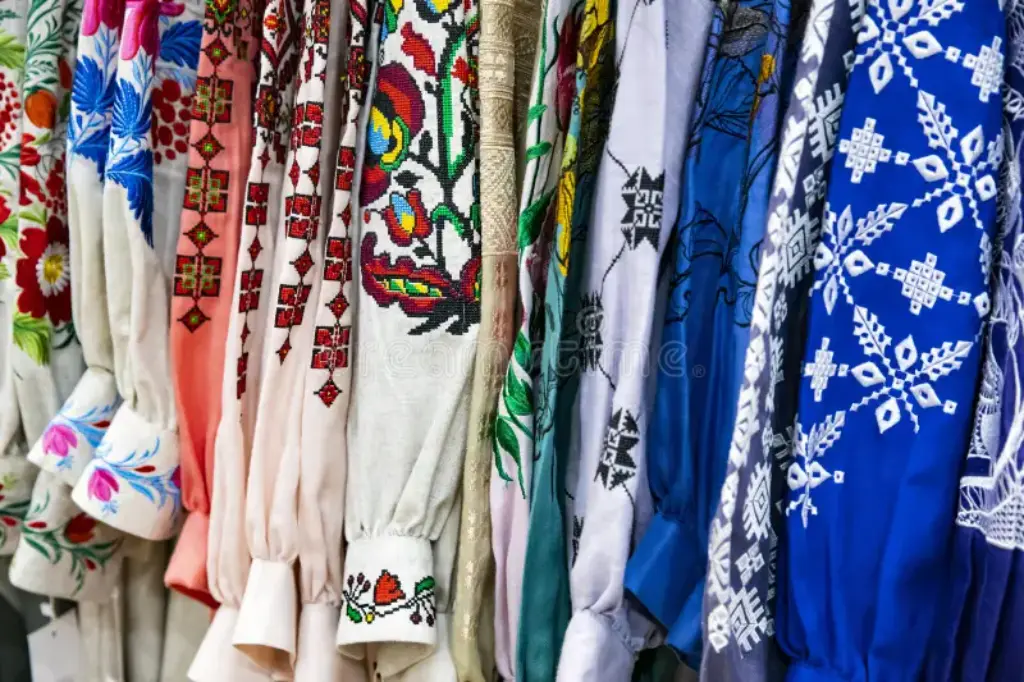
Yes, you can wear them.
But please — do it with care.
✅ DO:
- Learn what the pattern means first
- Buy from real artists — not Amazon or Shein
- Ask if it’s sacred (some patterns aren’t for everyone)
- Credit the culture. Tag the maker. Say thank you.
- Wear it with respect — not as costume
❌ DON’T:
- Buy cheap knockoffs
- Wear ceremonial items to parties or festivals
- Say “I love this tribe’s vibe” without knowing their story
- Ignore requests to stop using certain symbols
“Appreciation asks questions. Appropriation takes answers.”
— Dr. Adrienne Keene, Cherokee scholar
DIY: Make Your Own Geometric Symbol (Ethically!)
Want your own meaningful pattern?
Easy. Honest. No stealing.
Step 1: Go Outside. Find a Shape.
Look at:
- Cracks in sidewalk
- Branches on trees
- Ripples in puddles
- Veins in leaves
- Shadows on walls
Pick one. Sketch it. Snap a pic.
Step 2: Ask — What Does This Teach Me?
Is it strong? Gentle? Changing? Steady?
Write 3 words.
Example:
Sidewalk cracks → resilience, patience, beauty in broken places
Step 3: Turn It Into a Simple Repeat
Make it clean:
- Zigzag for cracks
- Spiral for snail shell
- Grid for window panes
- Triangle for roof peaks
Keep it yours.
Step 4: Put It Somewhere Meaningful
Stitch it on a bag. Paint it on your wall. Print it on a shirt.
Wear it as your own quiet reminder.
“The earth speaks in shapes. You just have to listen.”
— Toko-pa Turner
Where to Buy Ethical Geometric Wear
| Culture | Ethical Source | What They Sell | Link |
|---|---|---|---|
| Navajo | Toadlena Trading Post | Lightning blankets | toadlenachapterhouse.com |
| Ukrainian | Vyshyvanka Day Project | Diamond-stitched shirts | vyshyvankaday.org |
| Berber | Anou Cooperative | Eye-diamond capes | shopanou.com |
| Kuba | Congo Fabric Archive | Raffia cloth, modern wear | congoarchive.art |
| Andean | Awamaki | Spiral ponchos | awamaki.org |
| Ainu | Ainu Craft Store | River-zigzag robes | ainu-craft.jp |
| Maori | Kākahu Collective | Koru cloaks & tees | kakahu.co.nz |
| Ghanaian | Studio One Eighty Nine | Chevron kente fashion | studio189.com |
⚠️ Avoid Etsy/Amazon unless seller is verified by the community
Why This Matters Today
We live loud. Fast. Distracted.
Geometric patterns in folk clothing offer something rare:
Quiet. Meaning. Belonging.
When you wear a diamond — you carry ancestors.
When you stitch a spiral — you honor your path.
When you trace a zigzag — you dance with change.
These patterns are anchors.
They say:
Slow down. You’re part of something old. Something beautiful. Something true.
“In chaos, geometry is peace.”
— Islamic architect
Your Turn: Wear. Learn. Create. Give Back.
You don’t need a robe to carry this wisdom.
Start small. Start now.
📐 1. Pick One Pattern. Learn Its Story.
Read a book. Watch a doc. Follow an artist.
📚 Try:
- Patterns of the People (Native American)
- African Textiles Today by Chris Spring
- Braiding Sweetgrass by Robin Wall Kimmerer
🧵 2. Support Real Artists
Buy direct. Pay fairly. Share their work.
Search: “[Culture] + textile artist + Instagram”
Follow: #FolkGeometry #WearThePattern #IndigenousDesign
✏️ 3. Make Your Own Symbol
Use the DIY steps above.
Name it. Gift it. Wear it proudly.
🗣️ 4. Speak Up
See stolen designs? Gently correct.
See elders ignored? Amplify them.
See fast fashion copying? Call it out.
🌱 5. Give Back
Donate to land-back funds.
Plant native seeds.
Clean rivers.
Protect the places that inspire these patterns.
“Honor the hands that weave. They hold the oldest language.”
— Winona LaDuke
Final Thought: You Are Made of Shapes Too
Next time you see a zigzag on a cuff, a diamond on a skirt, a spiral on a shawl — pause.
That’s not “just fabric.”
That’s a grandmother’s hands remembering.
A child’s hope stitched in silence.
A rebel’s resistance woven in thread.
Geometric patterns in folk clothing are alive.
Wear them with love. Learn them with care. Pass them on — correctly.
And remember:
You, too, are made of lines — bending, turning, holding, rising.
Draw your own. Honor others’. Stay true.
💌 Loved this? Share it with a friend who loves art, culture, or quiet rebellion.
🧵 Follow #FolkGeometry on Instagram.
✏️ Grab thread. Look outside. Make your mark.
Written with deep respect for all who keep the old shapes alive. May we wear their wisdom lightly, carry it deeply, and return it generously.

